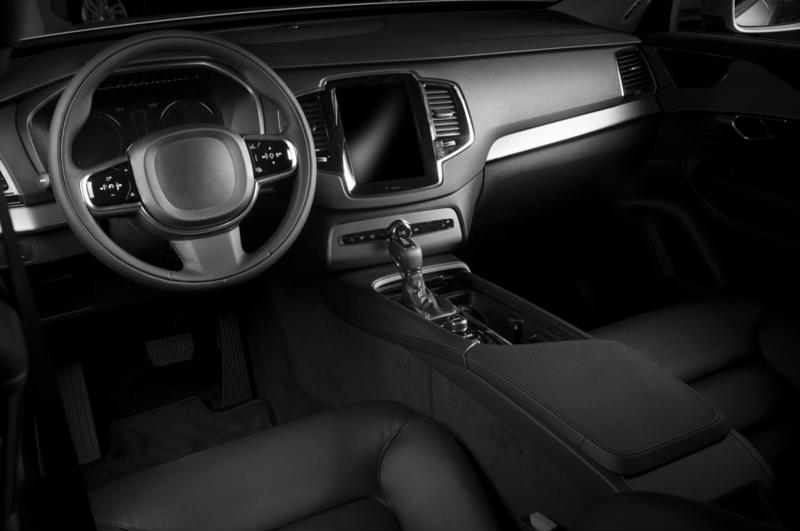The first traces of brake-like mechanisms were tested in the 1800s. These early brakes are quite unlike the high-tech brakes on today's vehicles. Since their origin, brake systems have evolved immensely, reducing the risk of car accidents and thereby improving passenger safety.
Due to the various forms of brakes that have evolved over the last two centuries, history does not pinpoint one individual as the inventor of the brake system. All the developers of these different brakes had one primary objective in mind: They wanted to give people the ability to control their motor vehicles. This desire for a safer driving experience is still continuing in the 21st century, with new goals and initiatives in mind. Inspection of the historical timeline of the brake disc as we know it reveals how far this technology has come.
Wooden block brakes
The first brake system consisted merely of a block of wood and a lever. When drivers wanted to stop their vehicles, they had to pull the lever to make the block of wood grind against the wheels, gradually pulling to a halt. When this method of brake technology was prevalent, horse-drawn carriages and steam-powered automobiles used steel-rimmed wheels.
In 1895, Michelin introduced the "Éclair," the first car to run on pneumatic rubber tires, according to Michelin. As rubber tires became popular, the wood block system became antiquated.

Mechanical drum brakes
This development was the first trace of a system reminiscent to modern-day brake technology. Inventory Gottlieb Daimler brainstormed the idea of wrapping a cable around a drum to stop the tires' momentum. Despite Daimler's conception of this system, French manufacturer Louis Renault is often credited as the primary manufacturer of drum brakes in 1902.
The drum brake was more responsive than its wood block predecessor. Despite the innovative differences between these two early forms of braking systems, manufacturers knew brake technology needed to evolve. Drum brakes were often less effective in heat, dust, snow and water, as they were external and could be tampered with by the elements.
Internal shoe brake
Before this innovation, all types of brakes had been outside the vehicle. The internal shoe brake was the first system to be fastened inside the vehicle. Just as the drum brake was the original brake reminiscent of modern-day braking systems, the internal shoe brake added a new essential element: The placement of the brakes inside the automobile.
Hydraulic brakes
Malcolm Loughead first introduced the concept of the use of hydraulics in brake systems in 1918, according to Greg Monforton and Partners. When drivers pressed the pedal, fluids would carry force to the pistons and the brake shoes. By the late 1920s, almost every manufactured automobile used this brake technology, as it made braking easier and more effective than previous mechanical processes.
Brake discs
This system existed for decades before it became mainstream in the 1950s. In 1902, William Lanchester patented the brake disc. As automobiles' sizes and speeds increased due to auto industry progress, brake technology needed to meet advanced vehicle demands. Hydraulic brakes couldn't perform up to task in distributing the heat coming off these new cars.
Auto Evolution noted that Chrysler was the first auto manufacturer to use disc brakes along with the already popular hydraulic brakes in its Imperial model. However, drivers criticized the amount of effort it took to operate this technology. A decade later, manufacturers developed a power brake system, which helped move the piston in the master cylinder, so drivers did not need to work as hard to stop their vehicles.

Anti-lock brakes
ABS, the most recent popular brake system, prevents brakes from locking up. This technology senses when the brake is about to lock and responds by stimulating hydraulic valves to reduce brake pressure. ABS provides the modern driver with more control, reducing the likelihood of accidents and injuries.
Electric brake force distribution
EBD is a recent improvement to anti-lock brake systems. Manufacturers understand that not every wheel needs to work as hard to stop a vehicle, since the weight inside the vehicle is seldom distributed evenly. Some wheels might support heavier passengers or cargo than other wheels, which requires more brake force to prevent the vehicle from losing control. EBD technology has the ability to measure the amount of weight each wheel needs to support. Additionally, it can alter the amount of power essential to braking instantly.
Just as the automobiles we drive have vastly changed over the past decade, so have the brake systems that keep these vehicles safe. To learn more about safe braking technologies, request a complimentary brake testing consultation from Greening.
